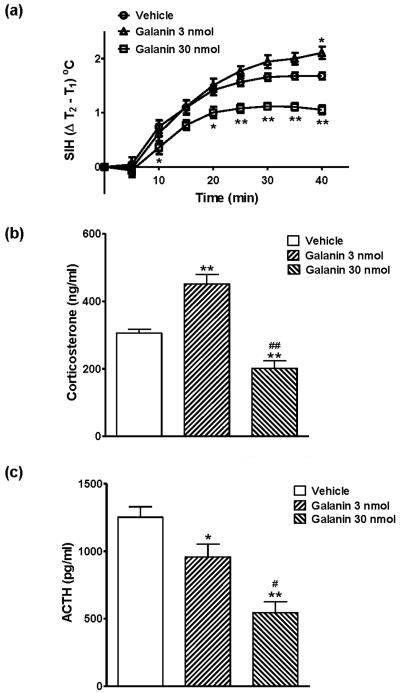Figure 2.
The effects of galanin injection (icv) on the restraint stress-induced hyperthermia test (a) and on its associated plasma corticosterone (b) and ACTH (c) levels. Mice were injected vehicle or galanin (3 or 30 nmol, icv), kept in individual home cages for 60 min and then given the restraint stress for 40min, followed by the blood sample collection (13:00 - 15:00). Both vehicle- and galanin-injected mice showed the increased core body temperature in response to restraint stress. A low dose of galanin (3 nmol, icv) showed the significantly increased core body temperature while a high dose of galanin (30 nmol, icv) showed the markedly decreased core body temperature, compared to the vehicle injection (a; * p < 0.05, ** p < 0.01; vs. Vehicle). These changes were correlated with corticosterone and ACTH levels (b, c; * p < 0.05, ** p < 0.01; vs. Vehicle, # p < 0.05, ## p < 0.01; vs. Galanin 3 nmol). The data represents means ± SEM (n ≥ 7).

